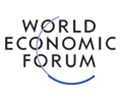
Cross-border payments are important for global economic growth. Whether you’re traveling abroad, purchasing goods or services from an international merchant, or sending a remittance to a family member, secure cross-border payments help facilitate a seamless payment experience.
Recognizing the importance of cross-border payments in 2020, the G20 supports a roadmap designed to improve coordination between the public and private sectors, and sets common goals to overcome existing frictions in cross-border payments. G20 economies have made progress on the roadmap, but challenges remain related to regulatory frictions and fragmented residential infrastructure. To overcome these and other challenges, continued collaboration between the private and public sectors is essential.
What are cross-border payments and why are they important?
Simply put, cross-border payments involve the transfer of value between senders and recipients in different jurisdictions. They support personal and business tourism, trade, and commerce worldwide, connecting consumers and merchants on a global scale. The three main drivers of cross-border payments are:
1. International travel
After years of lockdown during the COVID-19 pandemic, global travel continues to increase. UN Tourism reports that international tourism reached 96% of pre-pandemic levels in the first seven months of 2024. And Visa data shows that tourists around the world are traveling for longer periods of time, compared to the pre-pandemic period.
2. Global electronic commerce
Although e-commerce was growing rapidly before 2019, the global pandemic has fundamentally changed the way we interact with the world. We are used to shopping online, and global e-commerce has grown in recent years. According to the US International Trade Administration, worldwide ecommerce sales for B2B businesses are expected to reach $36 trillion by 2026, up from less than $10 trillion in 2017.
3. Global remittances
Remittances, namely money sent by people working abroad to their home countries, are an important source of income for hundreds of millions of families around the world. In many developing countries, remittances constitute an important part of GDP and are critical to economic stability. In 2021, remittances reached a record $773 billion, $605 billion of which went to low- and middle-income countries (LMICs). Although global remittances slowed in 2023, they are expected to grow faster in 2024, according to the World Bank.
Payment innovation and cross-border payments
As demand for cross-border payments increases, the private sector is developing innovative solutions to continue making payments safe, secure and consistent. Take the example of sending money. Imagine trying to receive cash in a remote location, which often requires you to go to an ATM machine or agent. To help combat this, digital remittances, which can move money across borders from a smartphone or computer, help make money transfers faster and more secure. World Bank data shows that the costs of digital money transfers are consistently lower than non-digital money transfers.
Behind the rise in digital remittances and other cross-border use cases are innovative money movement capabilities. For example, Visa Direct enables peer-to-peer (P2P) payments and account-to-account (A2A) transfers to individuals or small businesses worldwide. It has the potential to reach more than 11 billion cards, bank accounts and digital wallets in more than 195 countries and territories. To facilitate business-to-business cross-border transactions, Visa developed B2B Connect which is now available in 100 countries and territories and provides same-day payment services.
More work is needed
Despite private sector-led solutions, there is still friction in the cross-border payments process. The G20 Financial Stability Board (FSB) roadmap explicitly recognizes the important role of the private sector in achieving the goal of more efficient and inclusive cross-border payments. But innovation is only part of the story. Another piece of the puzzle is reducing regulatory friction. To put that in perspective, the impact of regulatory disparities on the financial sector is enormous, totaling around $780 billion per year. Regulation is vital and helps tackle things like money laundering and terrorist financing; However, countries around the world implement different policies, which can increase costs for businesses, especially small businesses.
What can the government do to help?
Data is the key to cross-border payments. Governments must support, not restrict, the free flow of data. In their latest report, the FSB acknowledged that some friction is inevitable, but fragmentation in data frameworks continues to be an obstacle to the efficiency of cross-border payments. This means that governments should avoid regulatory requirements that require data storage or use in one country and ensure that policies do not differentiate between domestic and foreign suppliers. But this also means ensuring greater regulatory cooperation between countries, including through greater interoperability.
For cross-border payments, ensuring that transactions meet compliance requirements in various jurisdictions, including requirements related to data privacy, consumer protection and dispute resolution, is key. Regulatory interoperability relies on international cooperation through bilateral and multilateral agreements, to facilitate transactions.
Lastly, the government should work to simplify and harmonize licensing processes to facilitate the movement of money. Increasing the consistency of licensing requirements will help private sector money movement service providers – both incumbents and new entrants – introduce innovations across jurisdictions in a faster and more inclusive manner.
What is next?
While there is still work to be done, progress is being made towards more efficient cross-border payments. Private sector-led innovation is helpful. But innovation alone will not solve all problems. Therefore, governments must look for ways to standardize and increase interoperability between jurisdictions, to reduce regulatory burdens. This will ensure that cross-border payments continue to be an engine of growth for the world economy.
Source: World Economic Forum




